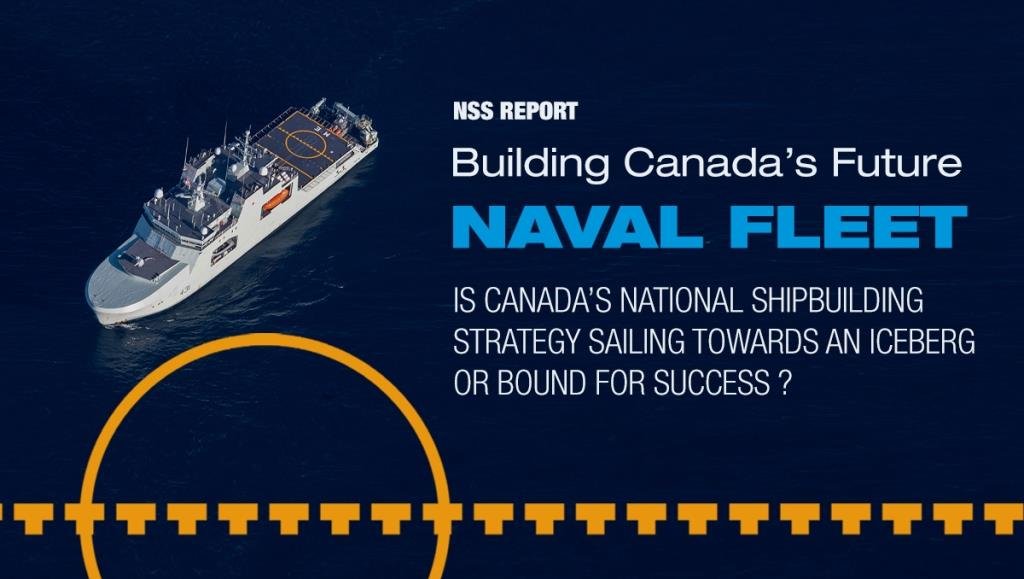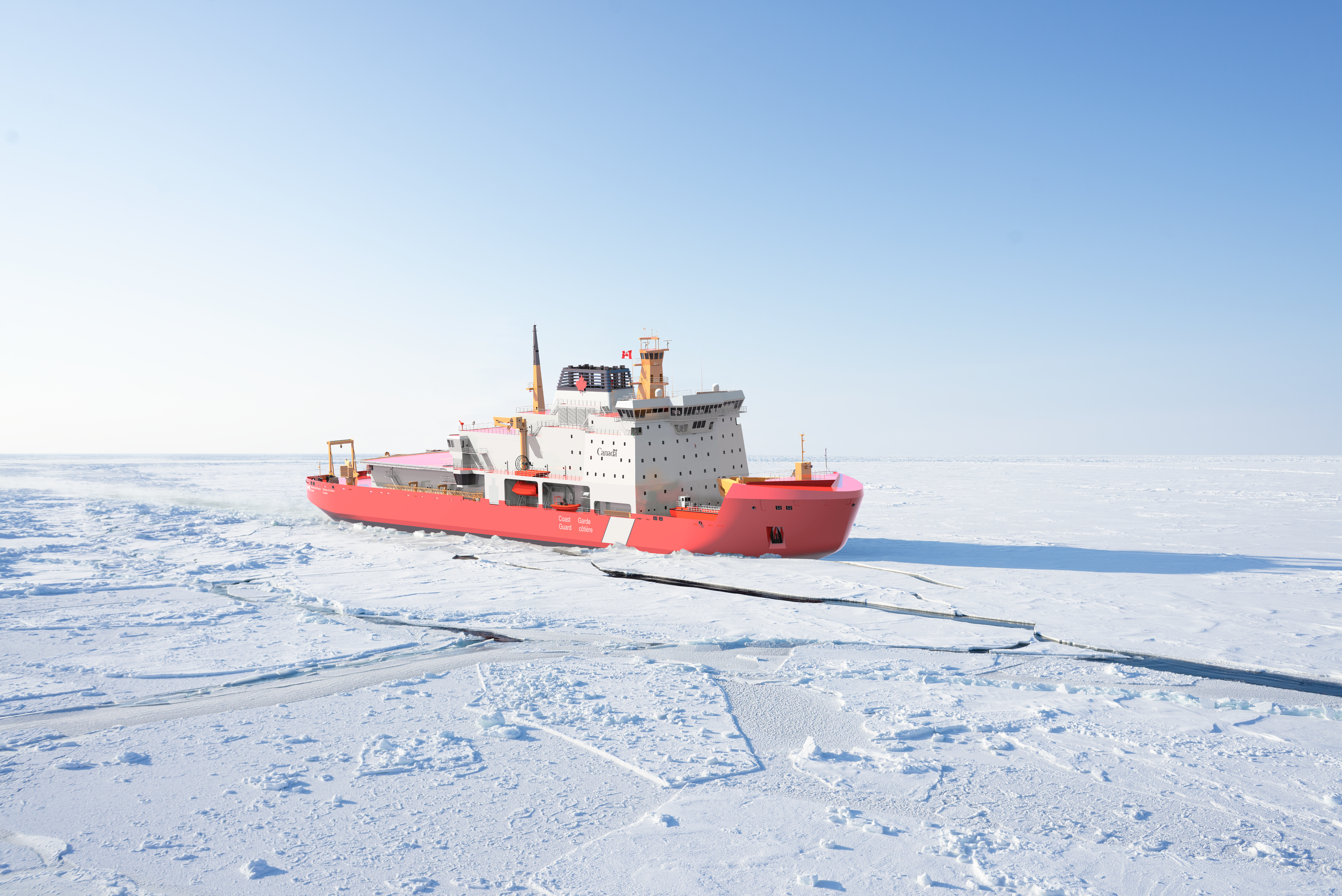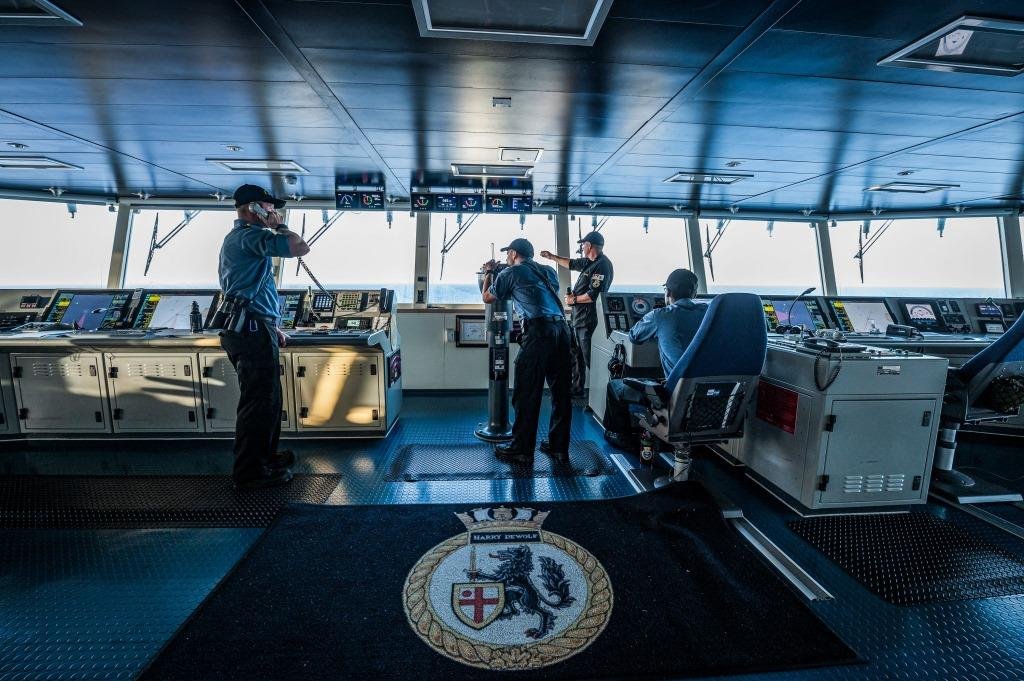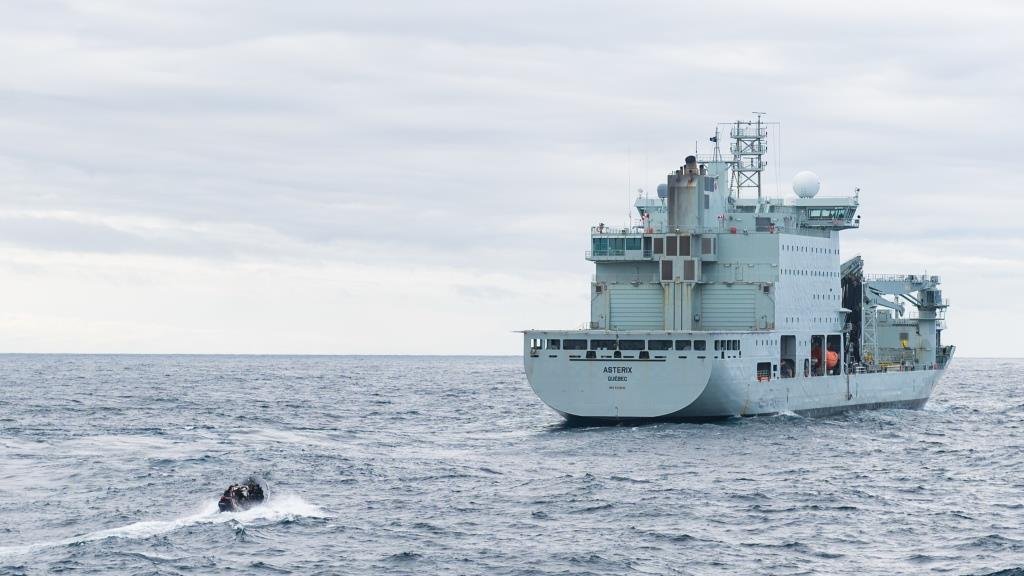NSS UPDATE - Building Canada’s Future Naval Fleet
BY JOETEY ATTARIWALA
Building Canada’s Future Naval Fleet
Sailing towards an Iceberg or bound for success?

The National Shipbuilding Strategy (NSS) is a long-term, multibillion-dollar program to renew the Royal Canadian Navy (RCN) and Canadian Coast Guard fleets. Announced in 2010, the strategy is meant to provide economic benefits to Canadians while revitalizing Canada’s marine industry.
The strategy allows the Government and the shipyards to make significant investments in Canada’s marine industry, such as developing and maintaining expertise and creating sustainable employment across the country. The goal of the NSS was meant to bring predictability to the procurement of vessels while eliminating the boom and bust cycles of vessel procurement, which slowed down Canadian shipbuilding in the past.
One of the most frustrating aspects of the NSS – and frankly, with all defence procurement in Canada – is disjointed governance and lack of oversight. For the NSS, Public Services and Procurement Canada (PSPC) is the contracting authority. Innovation, Science and Economic Development Canada (ISED) negotiates the shipyards’ obligations to generate economic benefits for Canadians, and it monitors and evaluates the shipyards’ performance according to their obligations. The Department of National Defence (DND), on behalf of the RCN, and the Canadian Coast Guard (CCG), manage individual shipbuilding projects. As a result, there is no one department or federal minister who is accountable for the delays or the billions of dollars being spent on the NSS.
TIER 1 SHIPYARDS
Under the NSS, the Canadian Government formed strategic partnerships with two Canadian shipyards, Irving Shipbuilding Inc. and Seaspan Vancouver Shipyards, to renew Canada’s federal fleet of combat and non-combat vessels, respectively.
In May 2019, the Government of Canada announced its intention to add a third Canadian shipyard as a partner under the NSS, and in August of that year, Canada launched a competitive process to select the new shipyard.
Chantier Davie submitted a proposal as part of the Request for Proposal (RFP) process for the selection of a third NSS shipyard. This included a third-party assessment of the shipyard’s infrastructure; submission and evaluation of a formal proposal from the shipyard; and a due diligence process to ensure the shipyard is financially capable of performing the work and making any necessary upgrades to its infrastructure. The assessment was similar to the process previously undertaken in 2011 to select Irving and Seaspan as strategic partners under the NSS.
In June 2022, the Government of Canada announced that it would begin negotiations with Chantier Davie of Lévis, Quebec, towards an umbrella agreement to become the third strategic shipbuilding partner under the NSS. An agreement was expected to be in place by the end of 2022, however as of February 2023 this has yet to occur, but is eagerly anticipated.
POLAR ICEBREAKER
The $8.5 billion contract will see Davie construct seven ships — 1 Polar Icebreaker and 6 Program Icebreakers for the Canadian Coast Guard. The build of these ships will play a crucial role in keeping the Canadian economy flowing and they will also support Indigenous northern communities and help protect the Arctic ecosystem as commercial shipping, and other activity, spikes along Canada’s northern coast. Moreover, the fleet will be directly linked to protecting Canada’s national security as well as strategic enablers for NATO, and other key alliances. According to Davie, they will help Canada maintain an international Arctic presence — a constabulary of the North.
The Arctic is not the only priority for Canada which, like its allies, is undergoing a shift to the Indo-Pacific — the world’s most economically dynamic and geopolitically volatile region.
Davie is well equipped to support Canada’s interests in the Indo-Pacific, having developed a highly capable Naval Centre of Excellence. The company has built a team of international naval maintenance experts which has real world experience of supporting military fleets in all theatres of operation and combat.
Davie’s commitment to a “Best Ability is Availability” philosophy has made it a leading provider of ship maintenance and through-life support services. It is a full-service provider from concept development, construction, conversion, repair, maintenance, sustainment through to end-of-life support.
“Our naval capabilities are very much open for business,” said James Davies, President and CEO of Davie Shipbuilding. “We firmly believe sustaining and ensuring optimum performance through a ship’s long life is as important as building the vessel.”
The company’s Lorne Dock has been transformed into a military specification secure facility dedicated to the long-term maintenance of Canada’s Halifax Class patrol frigates. HMCS St. John’s was returned to Canada under its own power in 2022, and work on HMCS Toronto is underway today.
MV ASTERIX
CONTRACT EXTENSION
M/V Asterix, Canada’s only naval support ship, which is owned and operated by Davie’s sister company, Federal Fleet Services, is a crowning achievement of the company’s Naval Centre of Excellence. The ship has served Canada, and international navies with distinction, for five years without any downtime. The RCN has renewed the Asterix lease for another two years, with the option to purchase at any time.
“Asterix is a turnkey solution and a byword for innovation, pragmatism and collaboration in defence procurement,” Davies told CDR. “We firmly believe Asterix is a scalable and exportable model with demand fueled by the pressing need for navies to support operations in multiple locations.”
In the meantime, Irving and Seaspan have invested in their shipyards and have been building ships for a number of years now.
AOPS UPDATE
“The amount of time it takes to build an Arctic and Offshore Patrol Ship has decreased with each new ship,” says Dirk Lesko, President of Irving Shipbuilding. “The third AOPS, HMCS Max Bernays, was delivered to Canada earlier this year. This ship was delivered in 55 months, the fastest delivery yet. We are now at a point where one new ship is delivered every year. At over 80% complete, work on AOPS 4 is currently scheduled for delivery next September. If all goes according to plan, AOPS 4 should surpass AOPS 3’s delivery schedule by a few months.”
Steel cutting for AOPS 7, the first of two variant ships for the CCG, will happen this summer. “These two ships will be delivered to the CCG in 2026 and 2027 respectively,” Lesko told CDR. “Production of the first of 15 Canadian Surface Combatants (CSC) will also be underway during this period.”
SET-BACKS 
The AOPS that Irving has built have been well received but have faced various issues. On the positive side, the RCN has sailed the first of Class, HMCS Harry DeWolf, around North America and demonstrated a number of capabilities which the ships bring to the Navy. On the negative side, there have been various setbacks for the $4 billion program. For example, HMCS Harry DeWolf recently experienced propulsion issues when its diesel generators failed, which resulted in it missing the recent iteration of Operation Nanook in Canada’s North. The ship also experienced problems with its fire suppression system, which is an essential safety system. More recently, the entire class (4 ships to date) have been afflicted with increased levels of lead in the ships' water systems which has necessitated the use of bottled water.
Setbacks have also impacted Seaspan and its workshare of the NSS. For example, the Offshore Fishery Science Vessels (OFSV) had various issues including welding problems and delays. The Joint Support Ship (JSS) has also faced significant delays which has caused the delivery timeline to move repeatedly, with the latest projection seeing delivery of JSS-1 in 2025 and JSS-2 in 2027.
Common to both shipyards are delayed deliveries and ballooning costs.
In 2021 the Office of the Auditor General of Canada issued a report of the NSS which stated that: the National Shipbuilding Strategy was slow to deliver the combat and non-combat ships that Canada needs to meet its domestic and international obligations. The delivery of many ships was significantly delayed, and further delays could result in several vessels being retired before new vessels are operational. National Defence and the Canadian Coast Guard have implemented measures to maintain their operational capabilities until new ships are delivered, but interim capabilities are limited and cannot be extended indefinitely.
CONCERN FROM FORMER ADM MAT – ALAN WILLIAMS
Sadly, this assessment is as true today as when the report was first published. Common to all setbacks in the NSS is an associated increase in cost, as pointed out by Alan Williams, former Assistant Deputy Minister (Materiel) at the Department of National Defence. CDR spoke with Williams who shared his perspective on the NSS, with specific emphasis on the Tier 1 work which has been awarded to the current major shipyards. “I'll take from Charles Dickens and say it's the best of times, and it's the worst of times,” Williams told CDR. He continued, “It's the worst of times, from my perspective, when the Government doesn't admit that there’s any financial crisis. They don't understand that this program and the Joint Strike Fighter occupy $100 billion worth of capital. The crisis to them is non-existent — they don't anticipate that the ship DND is sailing is heading towards the Titanic iceberg. They close their eyes to pretend everything is fine... I think it's a crisis the Government is pretending doesn't exist, and the opposition is not much better — they focus on trivial things like McKinsey and the ArriveCAN app.”
To Williams point, many recognize that the CSC that Irving is tasked to build is a program which is ballooning out of control. This is exemplified by an active life cycle cost analysis report prepared by the Office of the Parliamentary Budget Officer (PBO) on the CSC. The October 2022 report states that CSC development phase costs are estimated at $4.3 billion, while the acquisition phase costs are estimated at $80.2 billion; and the total life cycle cost of the CSC program is estimated to be $306 billion.
Williams added, “On the positive side, I think it's very significant that mainstream columnists that have not ever focused on defence are now doing it, and they're identifying the dysfunctionality of procurement, not simply as a defence matter, but as a national policy issue. So, I think that's resonating, and taking it out of the narrow defence box, I think, is very, very important. So, that's the good news. I wish Government was more upfront with the public. They will be held to account at some point in time, you can't avoid it — at least we're getting a sense from the media that they have now honed-in on this, and recognize the severity of the issue and I think they're going to be pushing the government harder and harder.”
THE SILVER LINING
There is no doubt that the NSS is an ambitious program which was bound to encounter hurdles and cost increases as the shipyards built their knowhow and capacity. John McCarthy, CEO of Seaspan said as much when he described Canada’s shipbuilding industry of 10 years ago as “moribund”. However, in the past seven years the shipyard has invested millions in upgrades and has grown from 50 people to 1,850 today.
“Our transformation has been pretty remarkable,” McCarthy told CDR. “I started at Seaspan in the middle of July 2018 as the Chief Transformation Officer, and since then we have really matured as a ship builder, as a ship designer, and as a team. We have built up our engineering and design bench strength — right now, we have over 300 engineers and designers at Seaspan and with our partners, we are over 700 in terms of that design and engineering capability which was essentially non-existent seven years ago.”
According to Seaspan, the company has delivered over $2.6 billion in direct economic benefits to Canada from its NSS work, and depending on the multiplier used, three to five times that number in spin off benefits. Build efficiencies are also being realized. “We were on a good trajectory [before COVID] with the Offshore Fisheries Science Vessels [OFSV],” McCarthy told CDR. “We went from 64 weeks from launch to trials on the first ship, to 16, to six on our third OFSV, which really put us into world class status from launch to trials.”
This optimism was shared by Lesko. “Last year (2022) marked more progress milestones than any other year,” he told CDR. “With each AOPS we have reduced production time and improved the quality of our work. As a result, yard wide schedule and cost performance trends continue to improve. In 2020, our team met the first-time quality standard about 80% of the time. We ended 2022 with 97% - our best year ever.”
“One important area of improvement is how we manage our Industrial Technological Benefits obligations,” Lesko continued. “We have implemented processes to better integrate our ITB obligations into our Supply Chain procurement process at an earlier stage. This has improved our ability to meet our Canadian Content commitments. We are already applying this process to the CSC program. We’ve engaged more than 1,200 proponents through our portal, conducted over 500 surveys, hosted 55 interviews and had over 450 suppliers attend our CSC Industry Day.”
BENEFITTING CANADIAN BUSINESSES 
Under the second and third pillars of the NSS, opportunities are being realized for Canadian shipyards and businesses across the country for small ship construction (less than 1,000 tonnes of displacement), and repair, refit and maintenance of vessels.
Hike Metal Products of Wheatley, Ontario, is a perfect example of a success story under the NSS. The shipyard is one of two that received build contracts to construct the Bay Class search and rescue lifeboats for the CCG.
“The NSS work has been a stabilizing business for us,” said Stephen Ingram, President of Hike Metal Products. “Having 10 new-build boats allows us to get a little bit more processed and organized and helps the development and growth of our company. And because we have a good reputation, we received a $25 million contract to do a Vessel Life Extension program for eleven 47-foot Cape Class motor lifeboats for the Coast Guard. We hope to have the first one delivered this Spring and then once the teething problems are out of the way, we hope the others fall into place pretty much every six months where we will have a new boat in and a new boat out.”
“I personally think the NSS is a fantastic program,” Ingram told CDR. “The marine industry was suffering in many ways for many years, and a lot of people were going offshore to buy vessels. I think the NSS helped to stabilize our industry, and it also helped us survive the COVID pandemic. It's certainly putting Canada's ship and boat builders strongly back in the market for offshore building and being considered for contracts offshore, so I think it's been good for everybody. I don't know of a good professional yard across Canada that is slow right now.”
INTEGRATED BRIDGE SYSTEMS
Similarly, companies like OSI Maritime Systems have benefited both domestically and internationally from its NSS related work. “I see us almost as the poster child of NSS because if you look at our business, we've been successful through competitive bidding and winning work on Asterix, AOPS, Joint Support Ship, and CSC,” said Ken Kirkpatrick, President and CEO at OSI Maritime Systems. “In winning these programs, it has created credibility for us in the international arena because if your home country is buying, it's a lot easier to sell when you go into another country. It has also allowed us the funding to continue to progress the development of our technologies, which creates a competitive advantage for us.”
The NSS program has helped OSI transition from what was its traditional business, which was the retrofit WECDIS (Warship Electronic Chart Display and Information System) which was a standalone system going on ships that never had electronic navigation, to now being in the much larger integrated bridge space.
“The Canadian programs really have been the foundation for stepping us into that arena,” Kirkpatrick told CDR. “If you look at the success that we've had around the world in regards to winning very large naval integrated bridge projects — Poland, Indonesia, Taiwan, Portugal, Saudi Arabia, the United States — without the Canadian programs, it would have been really difficult for us to go to market with credibility and with a refined capability that gave us a competitive advantage.”
“The next phase that we're excited about is the Coast Guard market with our first win for the Canadian Coast Guard AOPS 7 and 8,” Kirkpatrick said. “We've just completed the design phase of that project and we're just about to sign the contract for delivering the full integrated bridge for the Coast Guard AOPS platforms. We are actively developing and pursuing the Multi-Purpose Vessel (MPV) through Seaspan, and the Polar Icebreakers at Seaspan and Davie. If we can achieve that success, then again it gives us the foundation to go out and more aggressively pursue the Coast Guard business around the world.”
UNDERWATER WARFARE SUITE
Ultra Maritime Canada has also seen success through the NSS when it signed a substantial sub-contract with Lockheed Martin Canada as the underwater warfare lead for the CSC project.
Together with its Canadian sub-contracted team, Ultra Maritime will design, develop, and manufacture a next-generation underwater warfare suite for the CSC program; this includes a low-frequency active and passive towed array sonar system, a hull-mounted sonar, and a sonobuoy processing system. Ultra will also lead the integration of these sensors with Ultra Maritime manufactured sonobuoys for a comprehensive underwater warfare surveillance capability. According to the company, this new capability will thrust the RCN into the future of anti-submarine warfare (ASW), and will be fully compatible with other Five-Eyes nations’ equipment.
“As the CSC underwater warfare lead, we are together with major sub-contractors creating high-tech jobs in both Nova Scotia and Ontario in sonar design, development, and production,” said Jason Healey, Senior Manager Business Development at Ultra Maritime Canada. “This will ultimately solidify the RCN as one of the most advanced ASW navies in the world.”
Ultra Maritime Canada recently invested approximately $20 million in its Dartmouth facility to attract new talent and to expand its capacity to meet the upcoming demands of the CSC project and several international programs. “We are very excited about the future of shipbuilding in Atlantic Canada through the National Shipbuilding Strategy and our continued commitment to supporting the needs of the RCN,” Healey told CDR.
CLEAN DRINKING WATER
Similarly, the NSS has been important to Ottawa-based BluMetric Environmental Inc. as they are recognized as the leading water subject matter experts across the Canadian Armed Forces. Its systems and solutions are designed to use less energy and fewer consumables, which means they are compatible with the latest “green fleet” initiatives of the NSS.
BluMetric currently provides the shipboard reverse osmosis desalination (SROD) systems to the Halifax Class, JSS, as well as service and support onboard the Halifax class, MCDV’s, M/V Asterix, and are earmarked to start providing service and support for the drinking water systems on AOPS.
“Mission ready water in a world of uncertainty,” says Corey Switzer, BluMetric Director of CleanTech and Military Market Leader. “We are grateful for the NSS for continuing to support proven Canadian CleanTech innovation and services, because without water there is no mission.”
BluMetric recently expanded its CleanTech production footprint in Ottawa, and the increased capacity will allow the firm to deliver on current and future NSS programs to design and build water and wastewater treatment systems.
THERE IS STILL HOPE FOR NSS
One can see that although the large programs of the NSS are delayed and over budget, there is also good news emanating from the NSS program. The Office of the Auditor General of Canada’s 2021 report summed things up quite well with the following statement: As concerning as these delays are, we recognize that shipbuilding is complex — and that complexity is compounded by the National Shipbuilding Strategy’s objectives of creating a sustainable marine sector and generating economic benefits for Canada. Despite the delays, federal organizations have made adjustments to the strategy’s implementation that improve the prospects of timely future deliveries. Considering that the bulk of new ships are yet to be built, Public Services and Procurement Canada, National Defence, and the Canadian Coast Guard have an opportunity to further improve how they manage risks so that future projects are delivered on schedule.
Joetey Attariwala is CDR’s Senior Staff Writer

